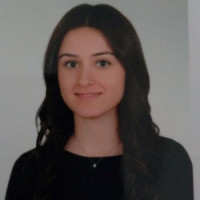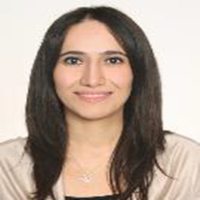Research Article
Aim & Scope
The Journal of Defense Sciences, prepared and
published by Alparslan Defence Sciences and National Security Institute since 2002, is published
semiannualy in May and November. The purpose of Defence Sciences Journal is to
contribute to the literature by following scientific developments in defence
sciences and creating a communication environment for scientific research and
applications. It also facilitates interaction between researchers and
practitioners in order to achieve
progress in the field.
The journal contains qualified articles in both
Turkish and English languages in the fields of
defence sciences, management sciences, international security and
terrorism, operational research, military history, military education
management and other fields related to defence sciences.
Author Guidelines
Publication Principles
The articles sent to the Journal of Defense Sciences are required not to have been published anywhere in the country and abroad and to be original in such a way that contribute to the related literature. The submitted articles that were presented in scientific meetings such as congress, symposium, seminar etc. can be accepted if they have not been published in the related proceedings document and this is explicitly stated by the article author(s). The articles which will be sent to the Journal of Defence Sciences for publishing are required to be sent to Directorate of Alparslan Defence Sciences Institute via alpdergi@kho.edu.tr.
The Articles submitted to the Journal are forwarded to the referees (two referees) of the particular scientific are by hiding the identity of the author in the event that the articles meet the formatting requirement mentioned below and the publication board finds it appropriate for the subject. If the evaluation of both referees turn out to be positive, the article is accepted for publication. In case one of the evaluation is positive and the other one is negative, the article is forwarded to a third referee. In the event that the editors or referees of the Journal request a change/correction in the text of candidate's article in terms of format, method or content, this situation is reported to the author and he/she is asked to amend the text again and deliver it in 15 days at the latest. The emended text can be reviewed again in case the referee deems it necessary. The articles submitted to the Journal of Defense Science are published with a final decision of the Publication Board after two referees give approval as ''publishable''. The articles submitted to the Journal are not given back in case of publication or non-publication.
The views expressed in the articles published in the Journal of Defense Sciences are of the personal views of the authors and do not constitute the official opinion of National Defense University and Directorate of Alparslan Defense Sciences Institute with any other institute and organizations. The writer is responsible for any faulty, missing references or distortions that may arise in the work. It is compulsory for the author to keep the reference data for every research for 5 years which was published. There is no copyright payment for the article sent to the Journal.
Text Formatting
1. Articles sent to the Journal can be prepared either in Turkish or in English.The spelling and the punctuation of Turkish articles and the abbreviations in them should be in accordance with the most recent edition of Turkish Language Association Spelling Book. The articles should be clear and understandable in terms of language and expression in accordance with scientific measures.
2. The articles sent to the Journal should be in the range of 2500-3000 words for the articles written in the engineering field and 5000-6000 words for the articles written in the social sciences.
3. The articles should include a maximum of 150-250 words of Turkish abstract and key words (3 to 7 words) and also English title, abstract and key words. Both of these Abstracts should be in Times New Roman 11 font, one and a half spaced and in italics. In addition, there will be an Extended Summary at the end of the article in accordance with the scientific writing rules not to exceed 750 words. The Extended Summary which will consist of Introduction, Main Titles and a Conclusion sections will be prepared in English for articles in Turkish, and in Turkish for articles in English.
4 The names of the authors should be written side by side under the title of the article; the title of the author, the name of the institution/organization to which he/she is affiliated and the e-mail address should be indicated in footnote (*) with 9 point.
5. The articles should be written in Times New Roman 11pt, one and a half spaced, and justified. Page numbers should be stated on the bottom and page margins should be 4 cm to the right, 4 cm to the left, 5,5 cm to the bottom and 5,5 cm to the tol. The paper type should be A4.
6. After the first page, name of the author should be given to the even pages, name of the article should be given to the odd pages in 10pt as header.
7. Page number should be given to every page (Table 1, Figure 2 etc. );The title of the tables should be above and the title of the figures should be below. These titles should be centered and the first letter should be uppercased in 10pt. For the statistics, no more than three letters should be written after the comma. Equations should be numbered. Page number should be in brackets and located at the right side of the sheet.
8. Using endnotes in the articles should be avoided and things that will be stated in this part should be given in the text. If it is compulsory to use endnotes, those should be stated at the end of the pages after numbered or stated at the end of the text but before the reference as endnote.
9. Technical terms should be in quotation marks or explained. Using abbreviations should be avoided for the terms.
10. Five level titles should be used in Journal of Defence Sciences. If it is not compulsory, these levels should not be exceeded. Introduction and conclusion parts should not be numbered.
1. First Level
a. Second Level
(1) Third Level
(a) Fourth Level
(I) Fifth Level
11. Each tested hypothesis should be expressed and numbered separately (Hypothesis 1 and Hypothesis 1a, 1b etc.). Hypothesis should be indented and in italics. For instance;
Hypothesis 1: The managers working on public organizations have higher power distance than the managers working on private institutions.
12. Citation should be arranged alphabetically according to the last names of the authors. In different studies of the same author or authors, study dating back to an older date must be stated before. The same studies of the same author or authors should include ‘’a’’, ‘’b’’ next to the year of the study. Basically, each reference of studies which is referred, should be given as in the example below.
Name and year: Organizational Premises, Organizational Justice Perception (Brewer and Kramer, 1986; Cremer, 2005a, 2005b; Lipponen, 2001, 2006)
Only year: Mael and Ashforth (1992)
In studies with multiple authors, the first citation should include the names of all authors. Following citations should be abbreviated by using ‘’et al.’’ If there are more than five authors, it can be stated as ‘’et al.’’ after the last name of the first author.
13. If paraphrasing is difficult or causing vagueness, it is difficult to re-express the thoughts of an author or becomes meaningless, the expression taken from the source in the reference which is no more than 40 words should be written in quotation marks and the page number of the expression should be stated. For example: (Ozturk, 2003: 147). If the reference is required to be more than 40 words, quoted text should be in quotation marks, two times indented and paragraph (para. 15) or page (p.25) should be stated at the end.
14. If a page with no author name is required to be cited and if this is in a periodical publication, the publication name can be specified as the author. For example (Wall Street Journal of Trade, 2009), (The Ministry of Trade,1999). To state multiple sources in the same parentheses, they should be in alphabetical order, and each should be separated by a semi colon. For example: (Abrahams, 2000; Sullivan and Hellman, 1999). Secondary sources should be stated as (Blau, from Tamer in 1963, 2003), according to Tamer(2003) referencing Blau(1964).
15. When refering to electronic sources, general reference rules are valid (last name, year.). If this information is not reachable, the link of the source should be stated in parentheses. In short, when it is required to refer an electronic source of which author is unknown, the website of the source should be given in parentheses. If it is required to refer a professional website, data base or the website of a project the electronic address should be given in parantheses and it should also be stated in the references as shown in the below. For example; the website of UNICEF enables connections to various useful sources endeavoring for welfare of the children worldwide.
16. Acknowledgements: If there is any person or any institutions that you would like to thank for financial or any other types of support, you can express you sincere thanks by adding a note at the end of the study.
17. The references should be in 11 font size. Some examples of writing rules are givenbelow:
Books
Brannick, M.T., Levine, E.L. ve Morgeson, F.P. (2007). Job and work analysis. London: Sage.
Bloch S. ve Whiteley P. (2010). Düz bir dünyada yöneticilik. (Çev. Ü. Şensoy), İstanbul: İş Bankası Yayınları.
Article
Levine, E.L., Ash, R.A. ve Bennett, N. (1980). Exploratory comparative study of four job analysis methods. Journal of Applied Psychology, 3(1), 524-535.
Unpublished Works
Dağ, İ. (1990). Kontrol odağı, stresle başa çıkma stratejileri ve psikolojik belirti gösterme ilişkileri. (Yayımlanmamış Doktora Tezi). Hacettepe Üniversitesi, Ankara.
Welch, K.E. (Baskıda). Technical communication and physical location: Topoi and architecture in computer classrooms. Technical Communication Quarterly,14(3).
E-books
Shotton, M.A. (1989). Computer addiction? A study of computer dependency .http://www.ebookstore.tandf.co.uk/html/index. This Article was taken from this Website.
Ethical Principles and Publication Policy
ETİK KURALLAR
1. Dergiye gönderilen çalışmaların, özgün, bilimsel kuram ve metodolojiye uygun olması; mevcut uygulama ve kuramlara katkıda bulunması esastır. Çalışmalar Türkçe veya İngilizce hazırlanabilir. Dergiye gönderilen çalışmalar daha önce yurt içi ve yurt dışında herhangi bir yerde yayımlanmamış ve yayın için gönderilmemiş olmalıdır. Gönderilen çalışmaların daha önce başka bir yerde yayımlanıp yayımlanmadığını Dergi Yönetimi araştırmak mecburiyetinde değildir. Durumun etik sorumluluğu makale sahibine aittir. Çalışmanın dergimize yayımlanmak üzere gönderilmesi, yazarın bu konuda taahhüdü olarak değerlendirilir.
2. Bilimsel toplantılarda (kongre, sempozyum, seminer vb.) sunulmuş bir bildiriye dayanan aday makale, ilgili bildiri kitapçığında yayımlanmamış olması ve bu durumun belirtilmesi koşuluyla kabul edilebilir.
3. Dergiye gönderilen çalışma kapsamında gerçekleştirilmiş araştırma, veri toplama, analiz, araştırma sonuçları vb. bilgiler daha önce herhangi bir yerde yayımlanmış bir çalışmada kullanılmış ise makale içinde ve kaynakçada mutlaka belirtilmelidir.
4. Dergiye gönderilen çalışmaların birden fazla yazarı olması durumunda, makalenin yazarları, çalışmanın planlama, araştırma, hazırlama, yazıya dökme, düzenleme ve yayınlanacak son biçime getirme aşamalarında her birinin bizzat katkı sağladığını ve eşit sorumluluğa sahip olduklarını taahhüt ederler. Yazarların katkı oranları ve alanları farklı ise katkı oranı beyanı verilmelidir.
5. Dergiye gönderilen çalışmalar araştırma, veri toplama, analiz, araştırma sonuçları vb. konularda hiçbir şekilde uydurma (gerçekte olmayan) bilgi içeremez.
6. Yazarlar, sadece çalışmalarının ileri sürdüğü sonuçları ve çıkarımları destekleyen kaynaklardan değil, diğer bakış açılarını da destekleyen kaynaklardan da yararlandıklarını makalede ve kaynakçada göstermelidirler.
7. Bir araştırma kurumu/kuruluşu tarafından desteklenen çalışmalarda (TÜBİTAK, TÜİK, Türk Tarih Kurumu vb.), söz konusu kurumun/kuruluşun ve projenin adı, varsa, tarihi ve sayısı dipnotla belirtilmelidir.
8. Kongre ve sempozyum bildirilerinde toplantının adı, yeri ve tarihi belirtilmelidir.
9. Dergimize gönderilen çalışmalar düzenli bir şekilde intihal (plagiarism) taramasına tabi tutulmaktadır. Bu amaçla akademik çalışmalardaki intihalleri tespit etmek amacıyla iThenticate adlı intihal engelleme programından istifade edilmektedir.
10. Dergiye gönderilen çalışmalar Yüksek Öğretim Kurulu (YÖK) Genel Kurulunun 10 Kasım 2016 tarihli ve 2016.23.497 sayılı Yüksek Öğretim Kurumları Bilimsel Araştırma Yayın Etiği Yönergesi, Millî Savunma Üniversitesi Bilimsel Araştırma ve Yayın Etiği Esasları çerçevesinde ve COPE (Committee on Publication Ethics) (http://publicationethics.org/international-standart-editors-and-authors) standartlarında hazırlanmalıdır.
11. Dergiye gönderilen çalışmada insan ve/veya hayvanlar üzerinde yapılmış olan bir araştırma ya da araştırma sonunda paylaşılacak kişisel bilgiler var ise mutlaka yetkili etik kurulundan alınmış izin belgesi gönderilmelidir. İzin belgesi olmayan bu durumdaki çalışmalar kabul edilmez. Dergiye gönderilen çalışmalarda yetkili etik kurulundan izin alınmasını gerektiren durumlar şunlardır: Anket, mülâkat, odak grup çalışması, gözlem, deney, görüşme teknikleri kullanılarak katılımcılardan veri toplanmasını gerektiren nitel ya da nicel yaklaşımlarla yürütülen her türlü araştırmalar, insan ve hayvanların (materyal/veriler dâhil) deneysel ya da diğer bilimsel amaçlarla kullanılması, insanlar ve hayvanlar üzerinde yapılan klinik araştırmalar. Ayrıca olgu sunumlarında “Aydınlatılmış Onam Formunun” tesis edilip gönderilmesi, başkalarına ait ölçek, anket, fotoğrafların kullanımı için sahiplerinden izin alındığının belgelenmesi gerekmektedir. Kullanılan fikir ve sanat eserleri için telif hakları düzenlemelerine uyulması zorunludur.
12. Herhangi bir değerlendirme aşamasında akademik ve etik ilkelere uygunsuzluk tespit edilirse çalışmaların, hangi aşamada olursa olsun, değerlendirme süreci derhal durdurulur ve çalışma reddedilir
13. Genişletilmiş özet, “öz”de olduğu gibi araştırma ile ilgili amaç, problem, yöntem, bulgular ve sonuç bilgilerini içermelidir. Makalenizin yurt dışında atıf alabilmesi için bu önemlidir. Araştırma metninde yer almayan herhangi bir bulgu veya sonuç bulundurmamalıdır. Genişletilmiş özette metin içindeki bilgilere göndermede (Örn. Sayfa 2’de belirtildiği gibi; giriş kısmında da dile getirdiğimiz gibi vs.) bulunulmamalıdır.
14. Yazarlar makalelerinin öz bölümünde son paragrafta “Bu çalışma bilimsel araştırma ve etik kurallarına uygun olarak hazırlanmıştır. Bu çalışmada etik kurul izni veya yasal/özel izin gerektirecek bir içerik bulunmamaktadır. Çalışma ile ilgili herhangi bir çıkar çatışmasının bulunmadığı Savunma Bilimleri Dergisine yazar imzaları ile beyan edilmiştir.” ifadesini yazmak zorundadırlar. (Çalışmada izin alınması gereken bir içerik varsa, izinle ilgili bilgiler(kurul adı, tarih, ve sayı no) ilk sayfada verilecek ve izin belgeleri çalışmanın sonuna eklenecektir.)”
Hakemler İçin
1. Hakemler, dergimiz için aday çalışmanın, bilimsellik, derginin yazım kuralları, yayın ilkeleri ve etik kurallara uygunluğunu ve akademik kalitesini tespit edecek en temel unsurlardır. Hakemler, bu anlayışla hareket etmeli ve akademik kaliteyi artırma sorumluluğuyla değerlendirme yapmalıdır.
2. Hakemler, yalnızca uygun bir değerlendirmeyi yapmak için gereken uzmanlığa sahip oldukları çalışmanın hakemliğini kabul etmelidirler.
3. Hakemler, çift-kör hakemlik kurallarına uymalı ve çalışmaya dair detayları her şekilde gizli tutmalıdırlar.
4. Hakemler, inceledikleri çalışmaya dair herhangi bir bilgiyi hiçbir şekilde başkalarıyla paylaşmamalıdır.
5. Hakemler, değerlendirmelerini tarafsızlık ilkesine uygun olarak yapmalıdır. Yalnızca çalışmaların bilimselliğini, alana katkısını, içeriğinin doğruluğunu, yazım şekil esaslarına ve akademik ölçütlere uygunluğunu değerlendirmelidir. Çalışmada ortaya konan fikirlerin hakemin fikirlerinden farklı olması değerlendirmeyi etkilememelidir.
6. Hakemler raporlarında hakaret içeren, küçümseyici ve itham edici ifadelerden kesinlikle kaçınmalıdır.
7. Hakemler, raporlarında net ve çalışmayla ilgili detaylı ifadeler kullanmalıdırlar. Yayımlanmasını uygun görmedikleri çalışmalarla ilgili değerlendirmelerinde, kararlarının dayandığı eksik ve kusurlu hususları somut bir şekilde göstermelidirler.
8. Hakemler, yazarların çalışmalarında tarafsızlık ilkesine bağlı kalıp kalmadıklarını değerlendirmeli; sadece çalışmanın ileri sürdüğü sonuçları ve çıkarımları destekleyen kaynaklardan değil, diğer bakış açılarını da destekleyen kaynaklardan da yararlandıklarını takip etmelidir.
9. Hakemler en geç 30 gün içinde çalışmaları değerlendirmelidir. Şayet değerlendirme yapmayacaklarsa, hakemlik talebini almayı müteakip 1 hafta içerisinde hakemlik ret kararlarını dergiye bildirmelidirler.
10. Hakemler, değerlendirdikleri makalede herhangi bir çıkar çatışması olduğundan şüphelendiklerinde değerlendirme süreci ile ilgili olarak dergi editörlüğüne bilgi vermeli ve gerekirse makale değerlendirmesini reddetmelidirler.
Editörler İçin
1. Editörler, dergi etik kuralları ve yazım şekil esasları çerçevesinde gönderilen ve alana katkısı olacak çalışmaları değerlendirme sürecine kabul etmelidir.
2. Editörler, kabul veya reddedilen çalışmalar ile herhangi bir çıkar çatışması/ilişkisi içinde olmamalıdır.
3. Editörler bir çalışmayı kabul etmek ya da reddetmek için tüm sorumluluğa ve yetkiye sahiptir.
4. Dergi Yayın Kurulu, Sorumlu Yazı İşleri Müdürü ve Dergi Yayın Sekretaryası dergiye sunulan tüm çalışmaların mahremiyetini yayınlanana kadar temin etmekle yükümlüdür. Çalışmalarla ilgili yazar(lar)ı dışında hiç kimseye bilgi verilemez.
5. Çift kör hakemlik prensibi gereği, hakemlerin ve yazarların isimlerinin karşılıklı olarak gizli tutulması editörlerin sorumluluğudur.
6. Editörler, dergiye gönderilen çalışmaların intihal taramasını değerlendirme süreci başlamadan yapmalı ve intihal oluşumunun önüne geçmek için gerekli çabayı göstermelidir.
7. Dergiye gönderilen çalışmaların intihal taraması, ön inceleme, hakemlik, düzenleme ve yayımlama süreçlerinin vaktinde ve eksiksiz bir şekilde tamamlanması editörlerin görevidir.
8. Editörler dergiye gönderilen çalışmaları kabul/ret ederken araştırma etik kurallara uygunluk ve akademik ölçütlere göre hareket etmelidir.
Okurlar İçin
Okurların Savunma Bilimleri Dergisinde yayımlanan bir çalışmada önemli bir hata ya da yanlışlık fark ettiğinde ya da editoryal içerik ile ilgili herhangi bir tespiti (intihal, yinelenen makaleler vb.) hâlinde, durumu alpdergi@kho.msu.edu.tr adresine bildirmeleri memnuniyetle karşılanacak ve ivedi değerlendirmeye alınacaktır.
Price Policy
Ücretsizdir.
Indexes
Citation Indexes
Other Indexes
Journal Boards
Baş editör
editör

Alan Editörleri

















Turkish Language Editors
English Language Editors


Layout Editor

Technical Editor
Managing Editör








